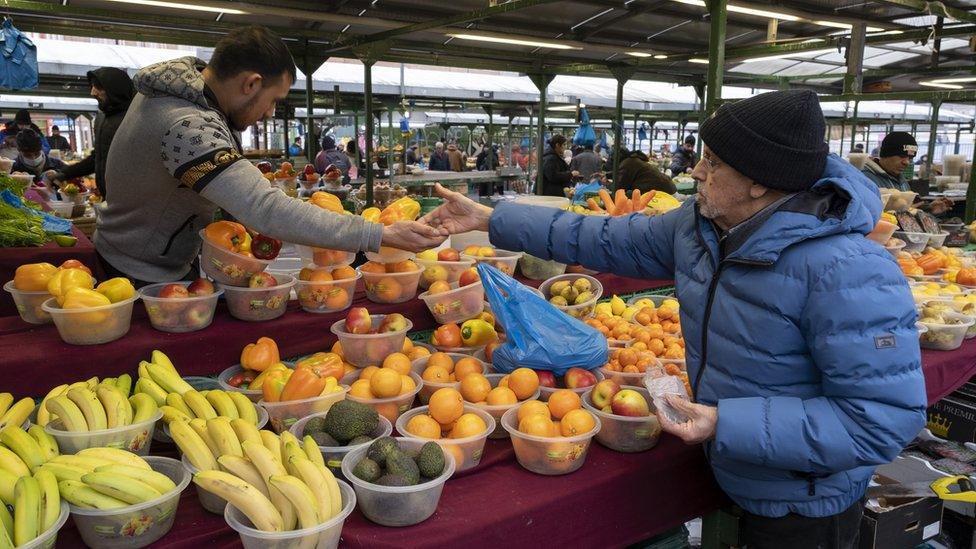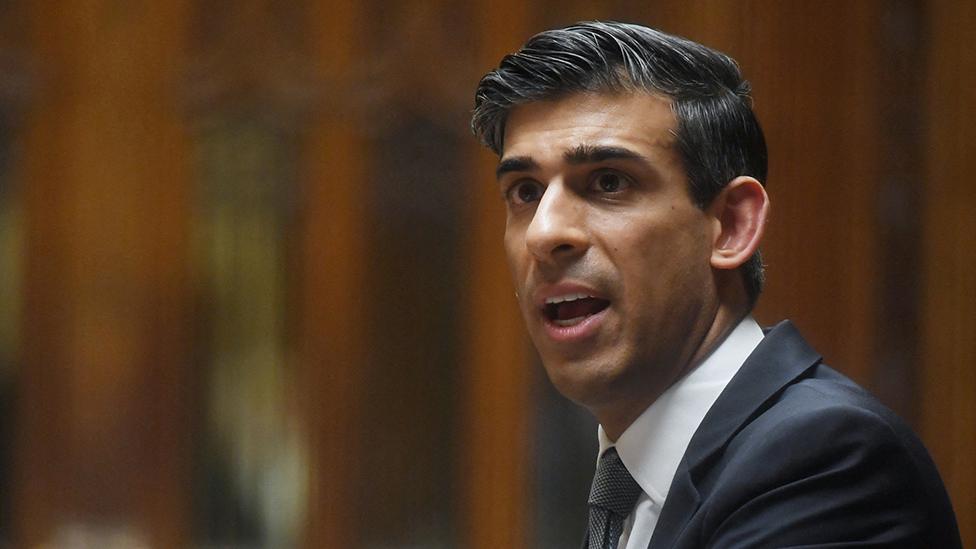Squeeze on households overwhelms tax reversal
- Published

High inflation was the factor coursing through every nook and cranny of this micro-Budget.
It is affecting the numbers, the trade-offs and the ability of these larger-than-expected measures to fundamentally change the picture for millions of households.
The chancellor has effectively reused some of the significant extra billions arising from his decision to freeze income tax thresholds for four years. This has raised over double original forecasts because of high inflation, but it will still only roll back half the rise in National Insurance.
The 5p cut to fuel duty will see an immediate modest impact at the pumps.
However, none of this is enough to fundamentally alter the significant household cost of living pain revealed by the Office for Budget Responsibility (OBR) - the biggest fall in real household disposable income per person since official records began in 1956, bigger than the pandemic or after the 2008 financial crisis.
This is after the government's £18bn attempts to support living standards, which has offset about a third of the fall from rising inflation overall. And much of this pain is to come, including an OBR forecast for a further rise of 40% in the energy price cap during the autumn. Over the next year overall energy bills are expected to be £1,100 a year higher.
The big gap in the Spring Statement was any recognition of the impact of inflation of 6% enduring at even higher rates over the course of this year on public sector pay, tax credits and benefits. All of these will now face considerable real terms cuts to their value.
So the tax changes were bigger than expected, albeit more accurately described as smaller tax rises than actual tax cuts. But the tidal wave of prices crunching living standards is just bigger.
- Published23 March 2022

- Published23 March 2022

- Published23 March 2022

- Published24 March 2022

- Published23 March 2022

